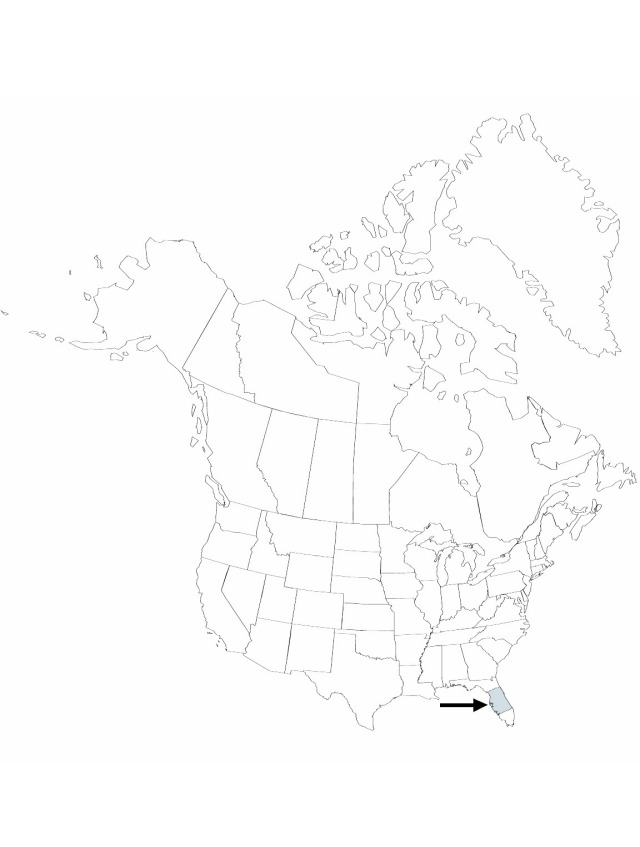Tillandsia simulata
Manual of the Southeastern Flora 270, 1503. 1933.
Plants single or clustering, flowering to 40 cm. Stems short. Leaves 15–30, many-ranked, erect to spreading, gray, 20–40 × 0.1–0.4 cm, densely appressed-grayish-scaly; sheath chestnut-brown, narrowly elliptic, slightly inflated, not forming pseudobulb, 1.2–2 cm wide; blade very narrowly linear-triangular, leathery, margins involute, apex attenuate. Inflorescences: scape conspicuous, erect, 10–15 cm, 4–6 mm diam.; bracts densely imbricate, erect, like leaves but gradually smaller; sheath of bracts narrowing abruptly into blade; spikes erect to spreading, palmate, linear, compressed, 2–5 × 1 cm, apex acute; lateral branches 1–5. Floral bracts imbricate, erect, rose, broad (covering all or most of rachis, rachis not visible at anthesis), elliptic, keeled, 1.4–1.8 cm, thin-leathery, base not visible at anthesis, apex acute, surfaces appressed-grayish-scaly, venation slight apically. Flowers 5–30, conspicuous; sepals with adaxial pair connate, elliptic, keeled, to 1.6 cm, thin-leathery, veined, apex obtuse, surfaces slightly scaly; corolla tubular, petals erect, violet, ligulate, 3–4.5 cm; stamens exserted; stigma exserted, conduplicate-spiral. Fruits to 3 cm.
Phenology: Flowering spring.
Habitat: Epiphytic on a variety of hosts in swamps and moist hammocks, usually in strong light
Elevation: 0–30 m
Discussion
Tillandsia simulata is a distinct species, but preserved material often is misdetermined as Tillandsia bartramii Elliott. L. B. Smith and R. J. Downs (1977) treated T. simulata as a synonym under T. bartramii.
Selected References
None.
